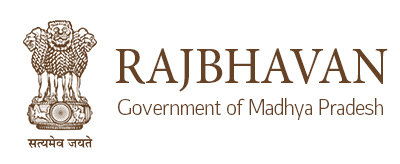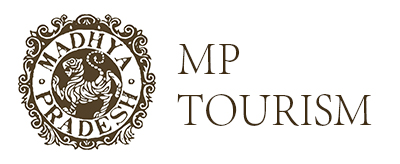Biosphere Reserves
- »Architectural Planning and Design Division
- »List of Empanelled Architect
- »Work Distribution
- »Form for Architectural Empanelment
- »Green Building Services
- Environment Engineering and Project Division
- »Preparation of DSoR
- »National Plan for Conservation of Aquatic Ecosystems (NPCA)
- »Vision Document for development of town for UADD
- »Waste Paper Recycling Unit
- »Project Management Consultancy/ Supervision and Quality Control
- »Conservation of Urban Water bodies
- »Landscaping and beautification
- »Structural design & Vetting
- »Green Ganesh Campaign
- »Comprehensive Mela Plan for Simhastha
Biosphere Reserve
Biosphere Reserve is an international designation given by UNESCO for representative parts of natural and cultural landscapes extending over large area of terrestrial or coastal marine ecosystems or combination thereof. BRs are designated to deal with one of the most important questions of reconciling the conservation of biodiversity, the quest for economic and social development and maintenance of associated cultural values. BRs are thus special environments for both people and the nature and are living examples of how human beings and nature can co – exist while respecting each other’s need.
The MAB, launched in 1970 by UNESCO, is a broad based ecological programme aimed to develop within the natural and social sciences a basis for the rational use and conservation of the resources of the biosphere and for the improvement of the relationship between man and the environment; to predict the consequences of today's actions on tomorrows world and thereby to increase man's ability to manage efficiently the natural resources of the biosphere reserve. The approach emphasizes the importance of the structure and functioning of ecological systems and their mode of reaction when exposed to human intervention including impact of man on the environment and vice-versa. MAB is primarily a programme of research and training and seeks scientific information to find solution of concrete practical problems of management and conservation. MAB's field projects and Biosphere Reserves constitute the main goal of the whole programme.
The International Coordination Council (ICC) of the MAB programme introduced the designation ‘Biosphere Reserve’ for natural areas in its first meeting held in Paris during November, 1971. Future functions of BRs were given concrete shape in MAB Project area of “Conservation of natural areas and of the genetic material they contain” (UNESCO, 1972). The concept of Biosphere Reserves was refined by a Task Force of UNESCO’s MAB programme in 1974, and BR network was formally launched in 1976. At the 12th session of ICC held in Paris from 25 to 29 January 1993, following five priority areas were identified to enable BRs to implement results of United Nations Conference on Environment and Development (UNCED) held at Rio de Janerio in June 1992:
- Conservation of biological diversity and ecological processes
- Development of sustainable use strategies
- Promotion of information dissemination and environmental education
- Establishment of a training structure
- Contribution to the establishment and implementation of Global environmental monitoring system
MAB is primarily a programme of research and training and seeks scientific information to find solution of concrete practical problems of management and conservation. MAB's field projects and Biosphere Reserves constitute the main goal of the whole programme.
The Indian National Man and Biosphere (MAB) Committee identifies and recommends potential sites for designation as Biosphere Reserves, following the UNESCO’s guidelines and criteria. A total of 727 BRs in 131 countries have been designated in the UNESCO’s World Network of Biosphere Reserves (WNBR). In India, 18 Biosphere Reserves have been established and 9 BRs are included in the WNBR. In Madhya Pradesh there are 3 BRs viz., Pachmarhi (1999), Achanakmar-Amarkantak (2005) and Panna (2011) BRs have been notified by MoEF, GoI. Achanakmar-Amarkantak BR is an example interstate BR. Its 68.10% area falls in Chhattisgarh and remaining 31.90% area falls in Madhya Pradesh. All the 3 BRs viz., Pachmarhi, Panna and Achanakmar-Amarkantak have been included in the UNECO’s World Network of Biosphere Reserve (WNBR).
Legal Status of BR
Designation of a site as Biosphere Reserve does not affect the legal status of the land, forests and regulations for natural resources and their ownership continue to remain unchanged.
Prime Activities
The Environment Department, Govt. of Madhya Pradesh is responsible for implementation of Management Action Plan (MAP) of Pachmarhi, Achanakmar-Amarkantak (MP Part) and Panna BRs. The State Government has nominated Environmental Planning & Coordination Organization (EPCO), Bhopal as Nodal Agency for preparation and implementation of Management Action Plan of all BRs in M.P. Executive Director, EPCO is the Director, BR for the designated BRs in Madhya Pradesh. The Govt. of MP has constituted State Level Steering Committee (SLSC) under Chief Secretary, and main line state departments being member of the committee. The Executive Director, EPCO is the member secretary of the committee. In order to monitor the ongoing projects a State Level Monitoring Committee under the Principal Secretary, Department of Environment has been constituted by Govt. of M.P. For implementation of the project activities related to various departments/ organizations at district level, a District Level Coordination Committee (DLCC) has also been constituted under chairmanship of respective collectors, the line field departments/ organizations being members of the committee. The Officer-in-Charge, Biosphere Reserve is member secretary of the committee.
The proposals are identified in the DLCC meeting and thereafter prepared by the line departments/ organizations and subsequently approved by the DLCC. The proposals received by implementing agencies recommended by DLCC are compiled by EPCO in form of Management Action Plan (MAP). Subsequently it is placed in the SLSC meeting for approval. Based on the approval and direction of the SLSC, the final report of MAP is sent to Ministry of Environment, Forests and Climate Change, Government of India for sanction. The ministry sanctions and releases the fund directly to EPCO. The same provided to the concerned implementing agencies through the Collector of respective districts.
The rigorous monitoring is carried out timely and the progress of the projects is reviewed in the DLCC. Field level monitoring of the projects are also carried out by EPCO from time to time.
Major Project (Completed)
- MAP – Pachmarhi BR : 1999-2000
- MAP – Pachmarhi BR : 2000-2001
- MAP – Pachmarhi BR : 2001-2002
- MAP – Pachmarhi BR : 2002-2003
- MAP – Pachmarhi BR : 2004-2005
- MAP – Pachmarhi BR : 2005-2006
- MAP – Pachmarhi BR : 2006-2007
- MAP – Pachmarhi BR : 2009-2010
- MAP – Pachmarhi BR : 2011-2012
- MAP – Pachmarhi BR : 2016-2017
- MAP – Achanakmar-Amarkantak BR : 2005-2006
- MAP – Achanakmar-Amarkantak BR : 2006-2007
- MAP – Achanakmar-Amarkantak BR : 2008-2009
- MAP – Achanakmar-Amarkantak BR : 2011-2012
- MAP – Achanakmar-Amarkantak BR : 2015-2016
- MAP – Panna BR : 2015-2016
- Prepared Landscape Plan pertaining to the Mining activities within AABR (MP-Part) in compliance of order of the Hon'ble NGT-CZ Bhopal.
- Prepared Landuse Landcover maps through GIS techniques for Panna, Achanakmar-Amarkantak BR and Pachmarhi BRs in collaboration with MPCST, Bhopal.
Preparation of nomination dossier for inclusion of Panna BR on the World Network of Biosphere Reserve of UNESCO.
Major Projects (Ongoing)
- MAP – Achanakmar-Amarkantak BR: 2019-2020
- MAP-Panna BR: 2020-2021
- As per the direction of MoEF &CC, GoI and in compliance of the decision of SLSC, preparation of Project Document for designating Kanha, Bandhavgarh & Pench Tiger Reserves and its surrounding areas as Biosphere Reserves has been initiated.
The preparation of periodic review report has been initiated in collaboration with the M.P. Council of Science and Technology, Bhopal.
Scheme(s) being implemented / coordinated
The Management Action Plan of Pachmarhi, Panna and Achanakmar-Amarkantak Biosphere Reserves for the year 2021-2022 will be prepared in consultation with District Level Field Coordination Committees and will be sent to the Ministry for sanction after the approval of SLSC.
Activities/ Research Work
Activities/ Actions on Sustainable Development Goals (SDGs)
- Sustainable Development Goals is the possible solution of Man and Environment conflict. SDGs cover all the sectors which need immediate initiative/ action for conservation of natural resources and preservation of natural wealth for future generations.
Under the Management Action Plan of Pachmarhi Biosphere Reserve major fund has been provided for the Livelihood Development and Socio-economic Upliftment of the Local inhabitants. This helps in poverty reduction which leads to achieve the SDGs target of No Poverty & Zero Hunger.
A. Successful case study for Promotion of Tussar Sericulture: Biowaste Composting and Recyling:
The Biowaste Composting and Recycling project has implemented under Management Action Plan of Pachmarhi Biosphere Reserve through Department of Sericulture, District – Hoshangabad, Madhya Pradesh.
Tussar Reeling by Women of Self Help Group (SHG)
The activities like promotion for mulberry & tussar silk have been successfully carried out by Sericulture Department. Ericulture based on castor species has also been initiated along with the plantation of Mulberry (Morus alba), Arjun (Terminalia arjuna), Saj (Terminalia tomentosa) trees in the last few years. The plantation and rearing activities have been carried out through Self Help Groups (SHGs) which results in the alternative source of livelihood for the local stakeholders and increase the silk production. A silk production centre has also established in 46 acre of land at Pachmarhi plateau and 2-3 rearing and production units has established by the Sericulture deptt. for promotion of sericulture activities in the area. These are potential activities which help in employment generation and improving the livelihood for the inhabitants of Biosphere Reserve area.
In order to improve the livelihood and employment in the BR area Tassar silk processor machine, spinning wheel, reeling wheel and other necessary material required for the production of silk have been provided to the beneficiaries at Khari village under the Management Action Plan of Pachmarhi BR. The bio-waste generated in the process has used as compost.
The Tussar cocoon production is carried out in the centres in which the Saj and Arjun trees are found. Farmers purchase the seed on subsidised rate of Rs 2.00, however the market price of the same seed is Rs 12.00 and feed it on the leaves of Arjun and Saj found in the centre and in the forest compartment.
Tussar yield has been carried out three times in a year. The farmers may earn Rs 30-40 thousand from sericulture practices. M.P. silk federation purchase the cocoons @ Rs 1750.00/ thousand for Grade-A, Rs 1500.00/ thousand for Grade – B, and Rs 1000.00/ thousand for Grade – C and amount is transferred directly into the bank account of the beneficiaries.
Under this project Motorised/ Pedal operated spinning machines 20 nos and Motorised Reeling –cum- Twisting Machine (06 spindles) – 20 nos purchased and training provided to the beneficiaries of SHGs.
Fish Culture in Johila Reservoir
B. Case Study related with Fish culture and development in Johila Reservoir:
Tribal have been traditionally involved in fish culture from the ancient time. They culture the fish in small ponds for their nutritious diet and for their festivals. Few years ago Department of Irrigation constructed the Johilla reservoir at Podki village of Janpad Panchayat, Pushprajgarh. Earlier reservoir was used only for irrigation purpose, the awareness created by the Fisheries deptt., Anuppur convinced them to carry out the fish culture with their traditional agriculture practices in Johilla reservoir. Department of Fisheries constituted the SHG of 25 tribal farmers and provided the training to them. Later on the reservoir was taken on lease for 10 years from Janpad Panchayat and continuous training, seeds etc. have been provided to the SHG. As the farmers were completely trained in fish culture then under the sub project “Fish culture and development in Johilla Reservoir” of Management Action Plan of Achanakmar-Amarkantak BR Fisheries department, Anuppur developed 02 nurseries of 0.1 ha each and provided to the farmers. Besides this fish seed (Span), input material, fishing net, Paddle Boat, Insulated box and Bicycle to Self Help Group (SHG) under MAP of AABR.
- In order to provide quality education about the environment Nature Camps have been organised for Children and also encouraged the participation of the students belong to all communities and genders to reduce inequalities and promote gender equality.
Successful Case Study of the Nature Camp associated with the above SDGs is discussed below:
The Nature Camp for School Children and Teachers have been organised for the past 15 years under Management Action Plan of Pachmarhi Biosphere Reserve. Similarly, it has been organising since 2006 under Management Action Plan of Achanakmar-Amarkantak Biosphere. The Nature camp has also been organised in Panna Biosphere Reserve.
In order to organise the camp Pachmarhi, Amarkantak and Panna are the best suited places in view of the rich biodiversity of Satpura Tiger Reserve, Panna Tiger Reserve and forest area around Amarkantak plateau. The primary focus of the camp was to orient the participants about the ‘Biosphere Reserve’ and enhance their understanding about the beauty and fragility of this enriched ecological region.
The camp venue was Indira Gandhi Forest Guard Training School, Pachmarhi for the students of Hoshangabad, Betul and Chhindwara districts. The camps for the students Anuppur and Dindori districts were organised at Forest Guard Training School, Amarkantak and camps for the students of Panna and Chhatarpur districts were organised at Panna near Panna Tiger Reserve. The duration of the camp was 3 days. A total of 07 camps has been organised since 2017 under Management Action Plan of Pachmarhi, Panna and Achanakmar-Amarkantak BRs. In Pachmarhi 155 students and 30 teachers were participated in 03 camps. In Achanakmar-Amarkantak BR 105 students and 20 teachers were participated in 02 camps and in Panna BR 97 students and 20 teachers participated in 02 camps.
The schedule was made in such a way that children get an opportunity to explore the nature through activities like nature trails, field visits and walks simultaneously to learn the importance of nature and biodiversity in their life through presentations, group discussion, interactive sessions, environmental games etc.
The participants were oriented on various environmental topics like water, forest, climate change, pollution and biodiversity. And to understand the environment and environmental problems: group discussions were held, environmental games were conducted, children were asked to explore the nature through nature trails etc.
For health and hygiene: Yoga sessions in the morning along with exercise to have positive impact on psychosocial and mental development of the child were held. It is an integral part of health and physical education which was conducted every day for the campers.
Nature Camp
In Pachmarhi the participants were also taken to silk rearing centre to make them understand the life cycle of a worm and its importance for human beings. For the overall development they were taken to Bison lodge to know about Pachmari and its rich biodiversity.
In Panna the field visit of Sarangpur, Trekking at Panda Fall, Brahaspati Kund, Karnawati Interprertation centre, Kalinjar, Jhinna, Chora, Nariyarpur were carried out.
The participants carry out for the field visit of Origin point of Narmada river, Karn temple, sunrise point, Jaleshwar, Amreshwar, Jain temple, Sonmuda, Mai ki bagiya, Shriyantra Mandir, Kapildhara , Dugdhdhara and Aranya Sangam cave and trekking to Herbal garden was also carried out. Students interact with tourists and learn about the enriched biodiversity of Achanakmar- Amarkantak BR.
- The projects like providing Community Water supply through installation of Solar pump in schools for drinking and continues supply of water in toilets of the schools, Promotion of Non-Conventional Energy (Distribution of Solar Home Lights, Solar lalten, Installation Solar Power Grid for the remote villages etc.) are the actions which towards Clean Water and Sanitation & Affordable and Clean Energy goals.
- For preparation of highly technical documents and research activities the Biosphere Reserve scheme provides opportunity to carry out respectable work with good remuneration/ fellowship at premiere institutes hence BRs also taken action for achieving the goal of Decent Work and Economic Growth.
- The activities under the project Habitat Improvement facilitate (In-Situ Conservation of Plant spps., Conservation of Degraded Forest Ecosystem, Plantation of Forest Tree spps. etc.) in improvement of forest health and also reduces the carbon footprint by acting as a carbon sink. These activities help in achieving the Life on land and Climate Action Goals of SDG.
- EPCO as a Nodal Agency for BRs in Madhya Pradesh has developed strengthened partnership with BR Managers, Lead Institutes, Ministry, State Departments and organisations, NGOs, Universities, Scientists and Local Stakeholders, hence initiated the action towards partnerships for the goal.
Publications
BRIS Publications, Article on Pachmarhi and Panna Biosphere Reserve in the Compendium of Biosphere Reserves of India Published by MoEF & CC, GoI, Brochures, Posters and Booklet on Biosphere Reserves of Madhya Pradesh.
Awards/ Recognition / Appreciation received
- Inclusion of Pachmarhi BR on World Network of UNESCO in 2009.
- Inclusion of Achanakmar-Amarkantak BR on World Network of UNESCO in 2012.
- Inclusion of Panna BR on World Network of UNESCO in 2020.
Web link of webpage/ portal / Social Media Page



















